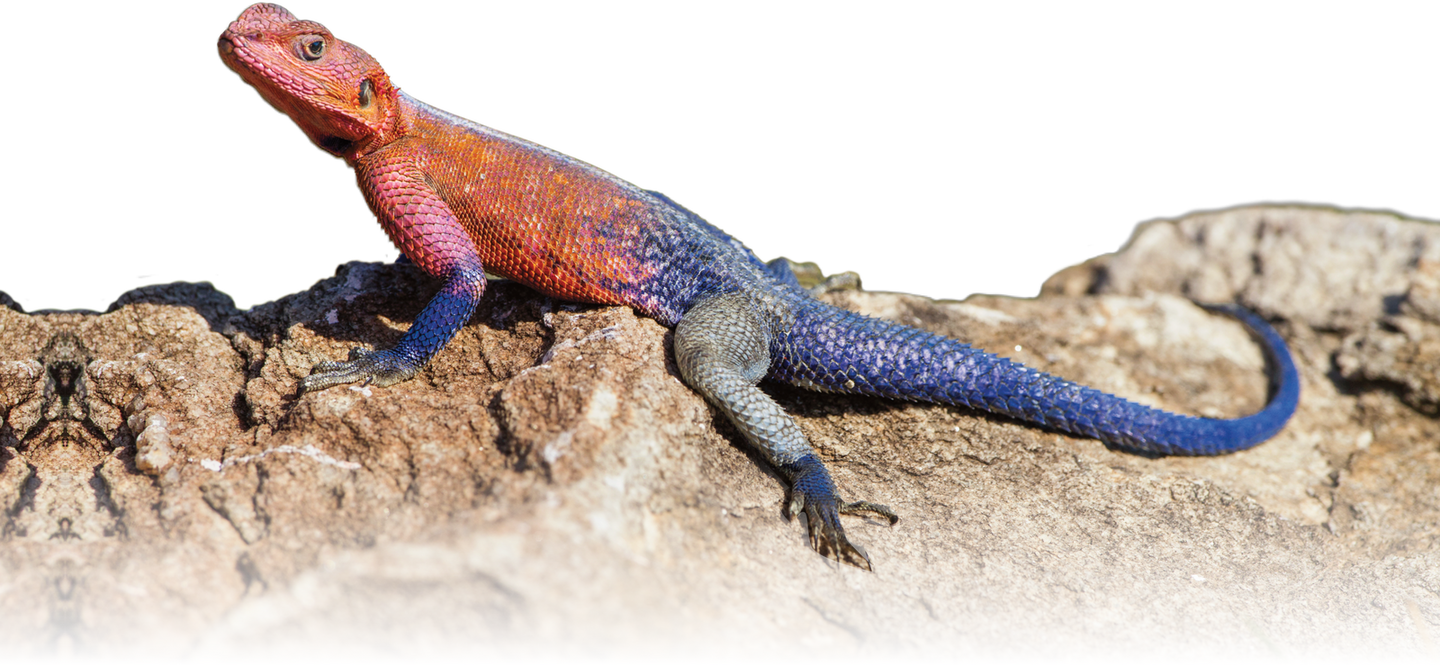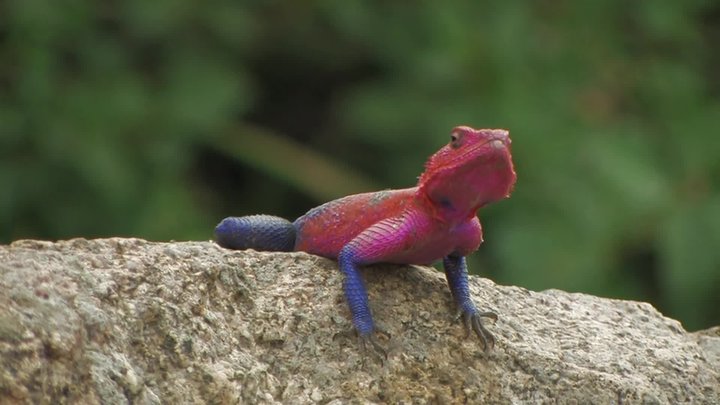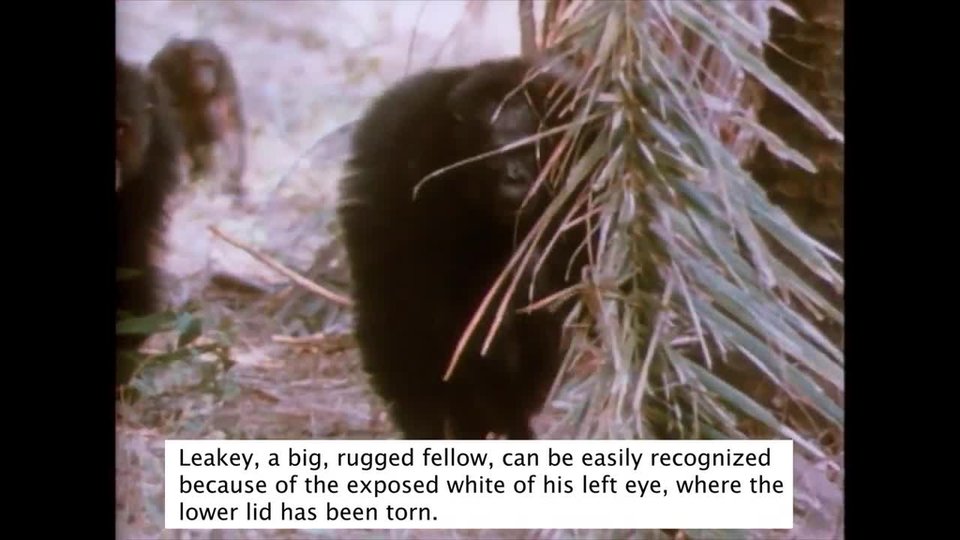SoakingUptheSun
Imaginethatyouandafriendaretakinganaturehikealongacreek.It’sasunny,springSaturdaymorning.Thewarmthofthesunfeelsgoodonyourskin,buttheairisstillchilly.Goodthingyou’rewearinga jacket.
Atabendinthecreek,alargegrayrocksticksoutofthemuddybank.Aflashofcolorcatchesyoureye.Youstepcloseranddiscoveralizardislyingontherock.Itsred‑and‑blueskinshimmersinthesunlight.Thecreatureisasstillasastatue,andyouwonder:Isit sleeping?
Asiftoanswer,thelizardtiltsitsheadtowardyouandblinks.Itstailsweepsbackandforthslowly,butitdoesn’tmoveofftherock.Thelizardalmostseemstobe sunbathing.
That’s exactly what it’s doing!
That’s exactly what it’s doing!
Energyfromthesunhelpsthisdesertlizarddartand dash.
Lizards,snakes,andotherreptilesareectotherms.Fish,insects,worms,andamphibians,likefrogsandsalamanders,areectotherms,too.Anectothermisananimalthatproducesverylittleheatinsideitsbody.Towarmup,theanimalhastogetheatfromits environment.
Likethelizardintheforest,thisdesertlizardbasksinthesuntowarmitself up.
That’swhythelizardissunbathing.Thesunlightstrikesitsback,warmingit.Therockabsorbsheatfromthesun,whichwarmsthelizard’s underside.
Duringthenight,thelizard’sbodytemperaturedropped.Itbecameascoolas thesurroundingair.Alowbodytemperaturemakesanectotherm’smusclesmoveslowly.Thelizardbecame sluggish.
Afteraboutanhourofsoakingupthemorningsunshine,thelizard’stemperaturewillriseenoughtogivethisleggyreptiletheenergyitneedstoscurryfromplacetoplace.Itwillbecomefastenoughtohuntandto escape predators.

HeatFromtheInside
Asyouandyourfriendcontinueyourhike,youhearasound:Clickety,clickety,clickety. It’sthedistinctivesoundoftinyclawsontreebark.Twosquirrelsarechasingeachotheraroundatree trunk.
Unlikethelizard,thesefurryrodentshavenoneedtosoakupsunlighttogetgoinginthemorning.That’sbecausesquirrelsandothermammalsareendotherms.Anendotherm isananimalthatproducesenoughheattokeepitsinsideswarm.Thesquirrelsdon’thavetowaitonthesun.Theycanbeactivethemomentthey wakeup.Socan birds.Theyare endotherms,too. Andsocan you.
That’sright! You areanendotherm.Theinsideofyourbodystaysatthesamewarmtemperatureofabout 37o C (98o F),whetheryou’resleepingsoundlyinbed,playingoutsideonahotday,orswimminginacold lake.
Endothermsaresometimescalledwarm‑blooded.Thetermfitsbecauseanendotherm’sbloodisalwayswarm,liketherestofitsinternalbody.Ectothermsaresometimescalledcold‑blooded.Thistermismisleading,though,becauseasanectothermwarmsup,sodoesits blood.

What’sInaName?
Ectothermandendothermmaysoundlikestrangewords,buttheymaketotalsensewhenyoubreakthem down.
EctothermcomesfromtheancientGreekwordsektos,whichmeans“outside”andthermos,whichmeans“warm.”Anectothermmustgetwarmthfromoutsideits body.
EndothermcomesfromtheGreekwordendo(“within”).Anendothermgetswarmthfromwithinits body.
See?Makestotal sense.

